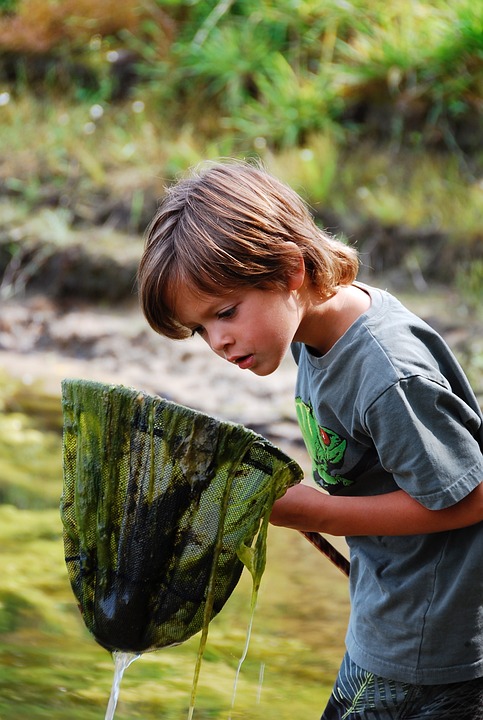Promoting Natural Fish Behaviors Through Feeding Strategies: A Comprehensive Guide
Introduction:
Understanding the importance of natural fish behaviors is crucial for maintaining the health and well-being of our aquatic pets. Fish have evolved to exhibit specific behaviors related to feeding, social interaction, and habitat exploration. By promoting these natural behaviors, we can enhance the overall quality of life for our fish. Feeding strategies play a significant role in achieving this goal, as they directly impact fish health and behavior.
Feeding Strategies for Promoting Natural Fish Behaviors:
1. Providing a Varied Diet:
Offering a diverse and balanced diet is essential for promoting natural fish behaviors. A combination of live, frozen, and pelleted food provides different textures and flavors, encouraging fish to actively forage and explore their environment. Including natural food sources, such as algae or insect larvae, and supplements like vitamin-rich foods, enhances their diet and supports their overall health.
2. Mimicking Natural Feeding Conditions:
To promote natural feeding behaviors, it is important to understand the natural feeding habits of the fish species in our care. Creating feeding zones within the aquarium that simulate their natural foraging behavior can be highly beneficial. Utilizing feeding devices like feeding rings, floating plants, or hiding spots encourages fish to explore their surroundings and engage in active searching and feeding behaviors.
3. Implementing Feeding Time Variation:
Varying feeding schedules is an effective strategy for promoting natural fish behaviors. Mimicking the unpredictability of food availability in the wild stimulates fish to actively search for food, preventing boredom and encouraging natural foraging instincts. Balance regularity and unpredictability by varying the timing and frequency of feedings, keeping in mind the specific dietary requirements of the fish species.
4. Adjusting Feeding Techniques for Specific Species:
Tailoring feeding strategies to the natural behavior of specific fish species is crucial. Understanding their preferred feeding locations, whether surface, mid-water, or bottom dwellers, allows us to provide suitable feeding methods and locations. For example, bottom-dwelling fish may require sinking pellets, while surface-feeding species may prefer floating foods. Adapting feeding techniques to suit their unique dietary needs ensures optimal nourishment and promotes natural behaviors.
5. Encouraging Social Feeding Interactions:
Fish are social animals, and social interactions during feeding replicate their natural environment. Group feeding techniques can promote natural behaviors by encouraging competition, hierarchy, and dominance. Observing social interactions during feeding times not only enhances their mental stimulation but also strengthens their social bonds and overall well-being.
FAQs: Promoting Natural Fish Behaviors Through Feeding Strategies:
1. How often should I feed my fish to encourage natural behaviors?
It is recommended to feed your fish small portions multiple times a day, simulating their natural feeding patterns. However, the frequency may vary depending on the species. Research the specific dietary requirements of your fish to determine the ideal feeding routine.
2. Can I solely rely on commercial fish food for promoting natural behaviors?
While commercial fish food provides essential nutrients, it is crucial to diversify the diet to promote natural behaviors fully. Incorporate live or frozen food options, such as brine shrimp or bloodworms, to stimulate foraging instincts and encourage natural feeding behavior.
3. How can I create feeding zones for my fish?
Designate specific areas within the aquarium where you place food to simulate natural foraging behavior. Utilize feeding rings, floating plants, or hiding spots to create distinct feeding zones. This encourages fish to explore the environment, promoting their natural behaviors.
4. What are the benefits of varying feeding schedules?
Varying feeding schedules helps mimic the unpredictability of food availability in the wild, promoting natural behaviors. It stimulates the fish to actively search for food, preventing boredom and encouraging natural foraging instincts.
5. Are there any fish species that require unique feeding strategies?
Yes, different species have specific feeding requirements based on their natural behaviors. Some species may prefer surface feeding, while others may be bottom dwellers. Research the natural feeding habits of your fish to ensure you provide suitable feeding techniques and locations.
6. How do social feeding interactions promote natural behaviors?
Fish are social animals, and observing social interactions during feeding replicates their natural environment. Group feeding techniques encourage competition, hierarchy, and dominance, all of which are essential aspects of their natural behaviors.
Remember, promoting natural fish behaviors through feeding strategies not only contributes to their physical health but also enhances their overall well-being. By understanding their natural instincts and adapting feeding techniques accordingly, you can create a thriving aquatic environment for your fish.









